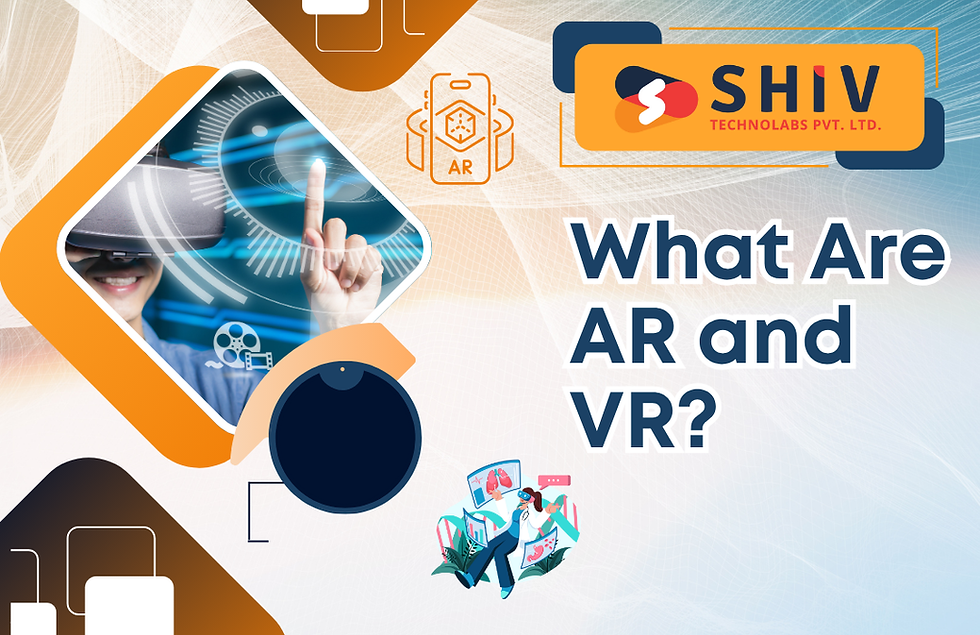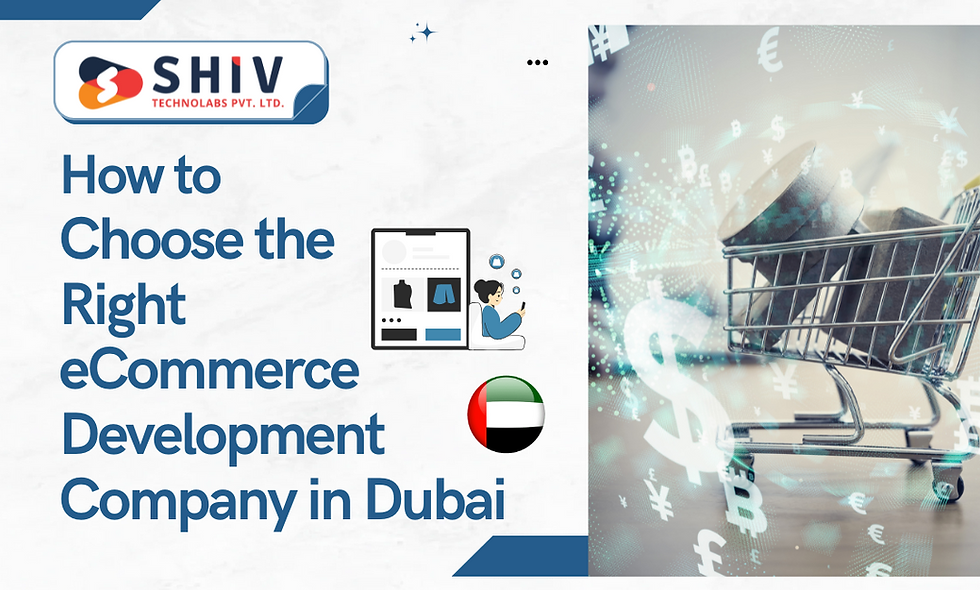How to Build Immersive AR & VR Experiences in 2025
- Kishan Mehta

- Jul 8
- 6 min read

Immersive experiences are changing how users interact with content. From virtual showrooms to training apps, AR and VR are shaping a new kind of reality. These technologies are now more accessible than ever. And businesses across many industries are starting to use them for better engagement.
If you plan to build your own AR or VR app, this guide will help. It covers each step in detail—idea to final launch. Whether you're in retail, real estate, or gaming, this blog lays out the full roadmap.
Let’s get started.
What Are AR and VR?

AR (Augmented Reality) overlays digital content on the real world. You see your environment but with added elements. Think of face filters on Instagram or Pokémon GO.
VR (Virtual Reality) creates a complete virtual environment. It blocks out the real world and replaces it with a computer-generated space. Popular examples include Oculus Quest apps and virtual training platforms.
Both offer immersive interaction, but they work differently. AR blends reality. VR replaces it.
Why Immersive Experiences Matter

Immersive content helps people engage more with products, ideas, or services. It creates real-time feedback, better focus, and emotional responses.
These experiences are now used in:
Education: Virtual labs and simulations
Healthcare: Surgery training, patient education
Retail: Virtual try-ons and product visualization
Real estate: 3D walkthroughs of properties
eCommerce: Product demos with AR models
For any eCommerce Website Development Company in Dubai, this is a game-changing feature. Imagine letting customers try products in real time with AR. Or guiding users through a 3D product journey in VR.
Step 1: Define Your AR/VR Idea
Every project starts with a clear goal. Decide what your AR or VR app will do. Will it educate, entertain, assist, or help people buy something?
Ask yourself:
What problem am I solving?
Who is the target audience?
What experience do I want to give?
Then map the user journey. Draw each step they’ll take. Include starting point, interaction, and end goal. This helps you stay on track during development.
For example, a furniture store app may let users place 3D sofas in their living room using AR.
Step 2: Choose the Right Hardware
AR and VR work on different devices. Your hardware choice will shape your development tools and design.
AR Hardware
Smartphones and tablets (most common)
AR glasses like HoloLens or Magic Leap
VR Hardware
Meta Quest (best for standalone use)
HTC Vive (PC-based)
PlayStation VR
If you’re building an AR eCommerce feature, mobile devices are ideal. Most people already have access to them.
Step 3: Pick the Right Development Tools
You’ll need tools that help you build, test, and publish your experience. Here are the top choices:
Game Engines
Unity – Great for both AR and VR. Works with Android and iOS. Uses C#.
Unreal Engine – Used for high-end visuals. Best for gaming or realistic simulations.
AR SDKs
ARKit – Apple’s AR development tool
ARCore – Google’s AR SDK for Android
Vuforia – Good for image recognition
VR SDKs
Oculus SDK – For Meta Quest and Rift
SteamVR – For HTC Vive and other PC VR
Pick the tools based on your app’s goal and platform. Unity is a solid starting point if you're building for both AR and VR.
Step 4: Create Your 3D Assets
You’ll need 3D models, environments, sounds, and animations. These are the building blocks of any AR/VR experience.
Tools for 3D Modeling
Blender – Free and powerful
Maya – Industry-grade modeling and animation
Cinema 4D – Great for motion graphics
Use Mixamo for pre-built character animations. It’s fast and easy for beginners.
Make sure models are optimized. Heavy files slow down performance and cause lags.
Step 5: Design for the User
Good design is the heart of an immersive experience. Focus on comfort, clarity, and feedback.
For AR
Add on-screen instructions
Use clear interaction zones
Avoid clutter
For VR
Keep motion smooth
Use teleport instead of walking
Limit camera shake
Also, remember to design for different user heights and handedness. Not everyone will use the app the same way.
Step 6: Build the First Prototype
Start simple. Build a basic version of your experience to test key features. Focus on the following:
User movement
Interactions (touch, gestures, gaze)
Object loading
Feedback (sound, vibration, visuals)
Use Unity’s prefab system to reuse components. Test each scene on actual devices, not just simulators.
Fix bugs early. It’s harder to fix issues later when you have more complex features.
Step 7: Add Real-World Interactions
Make your app feel natural. Let users interact with the environment and objects like they would in real life.
Features to Consider
Object occlusion – Objects hide behind real-world surfaces
Lighting estimation – Matches real lighting with virtual elements
Plane detection – Finds surfaces like floors and tables
Hand tracking – Used in advanced VR and AR glasses
These features improve realism and boost user interest.
Step 8: Test Across Devices
Testing is not a one-time step. It’s an ongoing process.
What to Test
Performance – Does it lag or crash?
Responsiveness – Do controls respond quickly?
Comfort – Any nausea or eye strain?
Visual accuracy – Are objects placed correctly?
Try your app in different lighting, with different users, and on multiple devices. Take feedback seriously.
Even a small issue can make the experience frustrating.
Step 9: Publish and Share
Now it’s time to release your app. Choose your distribution channel:
AR apps – App Store, Google Play
VR apps – Oculus Store, SteamVR, SideQuest
Add a clear description, screenshots, and demo video. Show what the app does and how it helps.
Also, provide support content like FAQs or setup guides.
Step 10: Keep Improving Post-Launch
Collect user data. Look at session time, most used features, and drop-off points.
Use analytics tools or in-app surveys to gather feedback.
Then improve the app based on this data. Add new scenes, better graphics, or fix common pain points.
Update often to stay relevant and compatible with new hardware.
Bonus Tips to Make Your AR/VR App Stand Out
Want your app to feel next-level? Try these features:
Spatial sound – Sound changes with direction and distance
Voice control – Let users give voice commands
Multi-user support – Connect users in shared virtual spaces
AI assistants – Add chatbots or guided tours in AR/VR
These additions can boost engagement and improve retention.
How AR/VR Adds Value to eCommerce
AR/VR is not only for entertainment. It’s now part of modern eCommerce strategy.
For example:
Let buyers place furniture in their rooms
Show how clothes look on a virtual model
Walk customers through a virtual showroom
Run 3D ads that react to motion
Any eCommerce Website Development Company in Dubai can stand out with these tools. Visual interaction helps people decide faster. It builds trust and reduces return rates.
Buyers are more likely to stay longer on your site when they can interact with products.
Why Dubai is Adopting Immersive eCommerce
Dubai has always embraced smart retail. Businesses here want more than websites. They want experiences that connect instantly.
That’s why eCommerce Website Development Services in Dubai are now integrating AR/VR. It gives stores an edge in attracting tech-savvy customers.
If you want to build an eCommerce app in Dubai, adding AR/VR can help you lead the competition. Whether it's fashion, auto, or home goods, real-time product interaction increases conversion.
Need Help Building Your AR/VR eCommerce Experience?
Building AR and VR features isn’t just about adding visuals—it’s about creating interactions that guide users and drive action. If you want to bring immersive shopping or virtual product tours into your store, you need the right strategy and support.
Here’s what expert AR/VR teams can help you with:
Plan user journeys that feel natural and intuitive
Build mobile-friendly AR or headset-ready VR apps
Add realistic 3D models and voice/motion interaction
Test across devices and improve user comfort
Integrate interactive features into your eCommerce platform
Shiv Technolabs – eCommerce Website Development Company in Dubai
Shiv Technolabs builds powerful AR and VR experiences tailored for retail and eCommerce brands. As a trusted eCommerce Website Development Company in Dubai, we help you shape online stores that go beyond flat screens.
Our team builds everything from 3D try-on apps to virtual showrooms and product visualizers. We work with your ideas and make them real—on mobile, desktop, or wearable devices.
Looking to add immersive AR/VR to your eCommerce platform? Contact us now to get started.
Conclusion
Creating immersive AR and VR experiences requires a strong focus on both visual detail and functional design. From selecting the right hardware and SDKs to building optimized 3D models, every step plays a role in user engagement. Real-time rendering, motion tracking, and spatial audio are no longer optional—they define the success of an immersive app.
Whether you're building for mobile AR or full-scale VR environments, attention to latency, usability, and testing across devices is critical. A well-planned development cycle with iterative testing ensures that the final product runs smoothly, responds quickly, and feels natural to the end user.



Comments